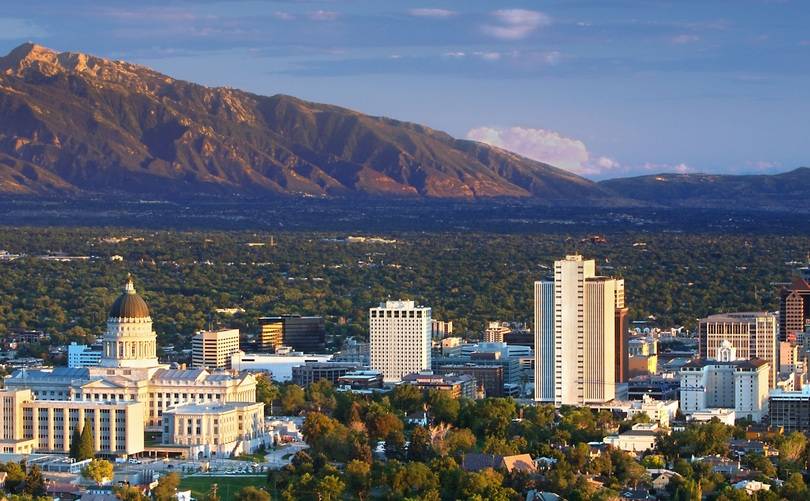
India's Golden Triangle - Taj Hotels
India
Experience the must-see Golden Triangle of India while staying in the luxurious Taj Hotel chain.
Highlights
- Old and New Delhi
- Agra Fort
- Taj Mahal at Sunset
- Amber Fort
- City Palace
- Day 1 - Day 1 - Arrival into Delhi
- Day 2 - Day 2 - Delhi: Sightseeing
- Day 3 - Day 3 - Delhi, Agra
- Day 4 - Day 4 - Agra, Jaipur
- Day 5 - Day 5 - Jaipur
- Day 6 - Day 6 - Jaipur, Delhi
- Day 7 - Day 7 - Departure from Delhi
- Additional Information
On arrival, meet your local representative at the airport and then be transferred to your hotel. Check-in begins at 2pm. Rest of the day is at leisure for independant activities.
Overnight in Delhi at the Taj Palace , Delhi
Taj Palace New Delhi
The Capital’s Palace Since 1983. Nestled amidst the heart of the historic Indian capital city, the iconic Taj Palace, New Delhi has held a distinguished position amongst the finest hotels of the world for close to four decades. Spread over six acres of lush gardens, this 5 star hotel in Delhi is synonymous with timeless luxury and unmatched hospitality. With panoramic views of the city's verdant protected greens, the hotel in Delhi offers an inimitable confluence of epitomising elements of Indian art, warm, personalised service and unmatched luxury. Four award-winning restaurants featuring an array of cuisines from across the world, a stylish bar, nine-hole putting greens, a temperature-controlled swimming pool and an expansive Jiva Spa make Taj Palace, New Delhi, a true urban oasis. In line with our sustainability efforts, a highly specialised electronic air filtration system helps maintain the air quality in the hotel, as per international AQI standards, so that you only breathe the purest air. Indulge yourself with personalised butler service, exclusive access to the Taj Club Lounge and other special privileges when you stay in our Taj Club Rooms and Suites. Host to the finest events and convention centre in Delhi, Taj Palace, New Delhi features the capital’s most coveted venues – a spectrum of 11 indoor venues and two manicured lawns.
In the morning, after breakfast at your hotel, proceed for a City tour of Old and New Delhi.
In Old Delhi, drive past the magnificent Red Fort (closed on Mondays). Enjoy a cycle rickshaw ride in the by lanes of Chandini Chowk. Drive past Kotla Firoze Shah, ruins of an old fort of the 14th century. Visit Raj Ghat, where Mahatma Gandhi was cremated in 1948. Drive through the old city subject to traffic restrictions.
In the afternoon, whilst over in New Delhi, drive past the Presidential Palace, the Rashtrapati, the impressive Rajpath to the World War I memorial arch, the India Gate, visit the Qutub Minar, the 72 metre high Minaret.
Overnight in Delhi at the Taj Palace.
Taj Palace New Delhi
The Capital’s Palace Since 1983. Nestled amidst the heart of the historic Indian capital city, the iconic Taj Palace, New Delhi has held a distinguished position amongst the finest hotels of the world for close to four decades. Spread over six acres of lush gardens, this 5 star hotel in Delhi is synonymous with timeless luxury and unmatched hospitality. With panoramic views of the city's verdant protected greens, the hotel in Delhi offers an inimitable confluence of epitomising elements of Indian art, warm, personalised service and unmatched luxury. Four award-winning restaurants featuring an array of cuisines from across the world, a stylish bar, nine-hole putting greens, a temperature-controlled swimming pool and an expansive Jiva Spa make Taj Palace, New Delhi, a true urban oasis. In line with our sustainability efforts, a highly specialised electronic air filtration system helps maintain the air quality in the hotel, as per international AQI standards, so that you only breathe the purest air. Indulge yourself with personalised butler service, exclusive access to the Taj Club Lounge and other special privileges when you stay in our Taj Club Rooms and Suites. Host to the finest events and convention centre in Delhi, Taj Palace, New Delhi features the capital’s most coveted venues – a spectrum of 11 indoor venues and two manicured lawns.
Red Fort
Seat of the Mughal Empire since Emperor Shah Jehan, the Red Fort stood for the might of imperial Hindustan. The medieval structure in Delhi holds significance even today as the Prime Minister of India makes his customary Independence Day speech from the ramparts of the fort on August 15. The fort stood at the eastern edge of Shahjahanabad, the new capital of Mughal Empire created by Shah Jehan in 17th century. Shahjahanabad was the seventh Delhi created since Indraprastha, the capital of Pandavas.
Built by Shah Jehan as his residence, the fort gets its name from the massive wall of red sandstone. The Red Fort was called the “Qila-i-Mubarak” or “The blessed fort”; however, it is popularly known as ‘Lal Qila’. Though the Agra fort made of red sandstone is also called Lal Qila, it is the fort at Delhi which is associated with the name.
Architecture of the fort, its planning and beauty showcases the ingenuity of Mughals and their love for creating masterpieces in stone. Though the fort has lost its glory and looks rather forlorn, it was the centre-stage of political happenings. The pomp and power of the fort was on display each Friday, when Emperor Shah Jahan paraded out of the fort at the head of his retinue atop an elephant, to offer prayers at the Jama Masjid.
The fort shot into limelight again and became the epicentre of political developments during the Revolt of 1857. It was the residence of the Mughals till the last royal Bahadur Shah Zafar was arrested for his role in the mutiny. The fort was the scene of an important event associate with the Indian freedom struggle. The joint court-martial of officers of Subhash Chandra Bose’s Indian National Army – Colonel Prem Sahgal, Colonel Gurubaksh Singh Dhillon and Major General Shah Nawaz Khan – was held at the Red Fort. The trio was defended by the INA Defence Committee which included legal luminaries like Jawaharlal Nehru, Bhulabhai Desai, Kailashnath Katju and Asaf Ali.
The Red Fort attracts large number of tourists for its architecture, history and for its sheer magnificence. The Red Fort is one of the most popular tourist destinations in Delhi.
Qutub Minar
The tallest minaret in India, Qutub Minar is among the iconic monuments of Delhi. Known as the ‘Tower of Victory’, the construction of the minaret also marked the beginning of the Muslim rule in India. Located at Mehrauli, around 3.9 million people visit the structure every year. Built from red sandstone and marble, the minaret is known for its history and architectural significance. The minaret and other monuments within the complex have been declared a UNESCO world heritage site.
A classic example of Indo-Islamic architecture, the foundation of the minaret was laid by Qutb-ud-din-Aibak in 1192. It was built to celebrate the victory of Mohammed Ghori over Rajput king Prithviraj Chauhan. However, Qutd-ud-din-Aibak died before completion of the minaret. Iltutmish continued construction and during his time three-storeys were added. Later in 1368, two more storeys were added by Firoz Shah Tughlak.
The minaret is 72.5 meters high and has five-storeys with a projecting balcony. The first three storeys are made of red sandstone, while the remaining two storeys with marble and sandstone. The exterior of the minaret is decorated with fluted columns, which have a 40 cm thick veneer of red sandstone. Another attraction of the minaret is its 397 steps, which leads to the balconies.
India Gate
Built as a memorial to commemorate the 70,000 India soldiers killed in World War I, India Gate was designed by Sir Edwin Lutyens and completed in 1931. Built from sandstone, the arch also houses the Eternal Flame, a gesture in memory of the Indian soldiers who laid their lives in the 1971 war with Pakistan.
In the morning after breakfast at your hotel, depart by road to Agra via the Yamuna Express way which will take approximately 3.5 hours. Arrive & proceed to your hotel.
In the afternoon, visit Agra Fort - behind its forbidding red sandstone battlements lie palaces that tell the story of the Moghul Empire. Visit Taj Mahal by Sunset (Taj Mahal closed on Friday's) - The Greatest love story ever told! On the death of his beloved wife Mumtaz Mahal, Shahjehan built her this memorial. It took 22 years to build this monument.
Overnight at the Taj Hotel & Convention Centre in Agra
Taj Hotel & Convention Centre, Agra
The Taj Mahal was built by Emperor Shah Jahan for his beloved queen, Mumtaz Mahal, almost 4 centuries ago, bestowing everlasting fame on the town of Agra. Even today millions flock to the seventh wonder of this world. Agra’s newest landmark, the Taj Hotel & Convention Centre, lies a short walk away from the Eastern Gate of this fabled monument. This modern 5 star hotel near Taj Mahal reimagines all that Agra can be.
In the morming after breakfast at hotel, depart by road to Jaipur which will take approximately 6 hours. Whilst en route, visit Fatehpur Sikri - 37 kms west of Agra lies the ghost city of Fatehpur Sikri - an epic poem in red sandstone, built by Emperor Akbar the Great in 1569 and deserted 14 years later because its water supply failed.
In the evening, arrive and proceed to your hotel.
Overnights at the Jai Mahal Palace.
Meals Included: BreakfastJai Mahal Palace, Jaipur
Built in 1745, the Jai Mahal Palace is a stunning piece of Rajasthan’s heritage, a great example of Indo-Saracenic architecture set amidst 18 acres of landscaped Mughal gardens. Jai Mahal Palace has been the residence of three Prime Ministers of the princely state of Jaipur. Painstakingly restored and recently refurbished, it is now a luxury five-star Taj heritage hotel equipped with all modern-day comforts.
After breakfast at your hotel, in the morning, take a half day excursion to Amber Fort. Enroute Photo stop at ‘Hawa Mahal’ (Palace of Winds).
Amber Fort – 7 miles north of Jaipur is Amber with it’s a honey-coloured fortress-palace in the Aravalli Hills which can be accessed by Jeep. It has been described as “the sleeping beauty of Rajasthan”. Transport will be by Jeep in both directions.
In the afternoon, continue with a City tour of Jaipur with a visit to Jai Singh’s Observatory which was built in the 17th century by the founder of Jaipur who, besides being a prince was also a soldier, astronomer and builder. Visit - City Palace, a part is now a museum that contains fine Rajput and Moghul paintings, rare manuscripts and an armoury, old carpets, and even amazingly embroidered clothes of the Maharajas and the Maharanis.
Overnight at Jai Mahal Palace
Jai Mahal Palace, Jaipur
Built in 1745, the Jai Mahal Palace is a stunning piece of Rajasthan’s heritage, a great example of Indo-Saracenic architecture set amidst 18 acres of landscaped Mughal gardens. Jai Mahal Palace has been the residence of three Prime Ministers of the princely state of Jaipur. Painstakingly restored and recently refurbished, it is now a luxury five-star Taj heritage hotel equipped with all modern-day comforts.
Hawa Mahal
HawaMahal or “The Wind’s Palace” was built in 1799, by the Maharaja Sawai Pratap Singh. Hawa Mahal is located on the southern side of the city. It has a very beautiful 5-story building, the design replicates the crown of Krishna. It appears like a honey comb with around one thousand tiny windows. They are embodied with lattice work and encourage cool breeze to flow through the palace, centrally air conditioning entire area during summers. The beautiful red and pink sandstones of the exterior give it an enchanting look.
Amer Fort
Renowned for its combination of Hindu and Mughal architecture, the Amber Fort is located about 11 km from Jaipur in Rajasthan. The citadel was the seat of the Kachhawa Rajputs who ruled Amer in Rajasthan before the capital was moved to the present day Jaipur. The construction of the fort was commenced in 1592 by Raja Man Singh I over the remnants of an earlier fortified structure. The fort was built with red sandstone. It was modified by successive rulers for 150 next years.
During Mughal rule, Amber under Man Singh I was at its height of power and influence. Man Singh was the Commander in Chief of the Mughal army and one of the Navratnas (nine jewels of Akbar’s court). The ornamentation of the fort is a blend of Rajput-Mughal styles. One can see intricate carvings, mirror and precious stone works on the walls and ceilings of the fort. There are several places in the fort complex, which has been built as per the Mughal style of architecture including the ‘Dil-e-Aaram’ garden, which is located at the entry point of the fort.
The fort is connected with Jaigarh Fort through fortified tunnel. The tunnel was built for the royal family members and others during the escape during the times of war, to take them to Jaigarh Fort, which was far safer place. There are several shops within the fort, where one can buy traditional Rajasthani costumes.
In the morning after breakfast, depart by road to Delhi which will take approximately 5 hours. Upon arrival into Delhi, transfer to your hotel.
Rest of the day at lesire for independant activities.
Overnight in Delhi at the Taj Palace
Taj Palace New Delhi
The Capital’s Palace Since 1983. Nestled amidst the heart of the historic Indian capital city, the iconic Taj Palace, New Delhi has held a distinguished position amongst the finest hotels of the world for close to four decades. Spread over six acres of lush gardens, this 5 star hotel in Delhi is synonymous with timeless luxury and unmatched hospitality. With panoramic views of the city's verdant protected greens, the hotel in Delhi offers an inimitable confluence of epitomising elements of Indian art, warm, personalised service and unmatched luxury. Four award-winning restaurants featuring an array of cuisines from across the world, a stylish bar, nine-hole putting greens, a temperature-controlled swimming pool and an expansive Jiva Spa make Taj Palace, New Delhi, a true urban oasis. In line with our sustainability efforts, a highly specialised electronic air filtration system helps maintain the air quality in the hotel, as per international AQI standards, so that you only breathe the purest air. Indulge yourself with personalised butler service, exclusive access to the Taj Club Lounge and other special privileges when you stay in our Taj Club Rooms and Suites. Host to the finest events and convention centre in Delhi, Taj Palace, New Delhi features the capital’s most coveted venues – a spectrum of 11 indoor venues and two manicured lawns.
In the morning after breakfast at your hotel, transfer to the international airport to board your flight for onward destination or departure home.
Meals Included: Breakfast
QUOTATION INCLUDES:
- 06 night’s accommodation on twin sharing basis in Standard Rooms at hotels mentioned
- Meal plan – Bed & Breakfast basis
- All transfer and sightseeing excursions by an air-conditioned car (1-2 people) and microvan (4-6 people)
- Cycle rickshaw ride in the by lanes of Chandini Chowk
- Both ways by Jeep at the Amber Fort, Jaipur
- Local English speaking guide for sightseeing as mentioned in the itinerary in each city
- Entrance fees and Archaeological Survey of India (ASI) entrance fees to all monuments
- All taxes as on date but all future levies will be charged extra
QUOTATION EXCLUDES:
- International Flights
- Items of a personal nature such as drinks, laundry, tips & gratuities, still/video camera fees at monuments or any items not specified above.
- Items not mentioned in the above cost includes column
- Visa charges for India & neighbouring countries
SPECIAL NOTE:
The following monuments are closed:
Red Fort – Delhi Closed on Monday
Taj Mahal – Agra Closed on Friday
*All clients must be covered by suitable travel/health insurance prior to departure from their country of origin
*Accommodation will be provided in hotels mentioned or alternate hotels in the similar category
*All hotels maintain a check-in and check-out time of 12 noon or 2pm as mentioned in the above













